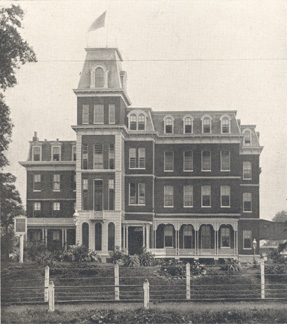 |
| In 1870 the St. Louis Boards of Police Commissioners and Health initiated the “Social Evil” Ordinance to reduce the spread of venereal disease, to give prostitutes the opportunity to reform, and to control and regulate prostitution. The ordinance was enacted by the city council in July 1870. The city was divided into 6 districts. The police were appointed to register prostitutes, visiting each brothel or place of business. A physician was assigned to each district and tested the prostitutes to identify those infected with venereal disease, who were then sent to the City Hospital for treatment. Problems arose, as many female patients objected to sharing wards with “fallen women” and there were instances of the prostitutes becoming too friendly with the male patients. A revised “Social Evil” Ordinance was passed in June 1871, which allowed for the establishment of a separate hospital for the prostitutes and a House of Industry where they could be trained in more socially acceptable vocational skills. The Social Evil Hospital opened in the fall of 1872, located on 11 acres of land at Arsenal and Sublette Avenue (near the St. Louis County Insane Asylum and the New County Poor House). Funding was to be provided by a monthly tax on each brothel and on each prostitute. The Social Evil Ordinance was not without critics. St. Louis civic leader and founder of Washington University, the Reverend William Greenleaf Eliot, spearheaded a campaign in early 1873 to discredit the Social Evil Ordinance and prevent it from inclusion in the new city charter which was then being drafted. Though legal challenges to the ordinance were unsuccessful, they did motivate public attention. The City council nullified the Social Evil Ordinance in April 1874 after receiving a wave of petitions opposing the ordinance. In June 1875 an ordinance aimed at suppressing, not regulating, prostitution was passed. The House of Industry, which had never been terribly successful at reforming “fallen women” who had little interest in being reformed, closed almost immediately. The Social Evil Hospital continued to operate, first treating unwed mothers and patients with venereal disease, and then becoming a general hospital for women. It was soon renamed the Female Hospital. The City of St. Louis continued to operate the hospital until 1910, when the remaining patients were transferred to the City Hospital. For a few years the building was used as an infirmary for old people from the poor house. The building was razed around 1915; its grounds are now Sublette Park. |
